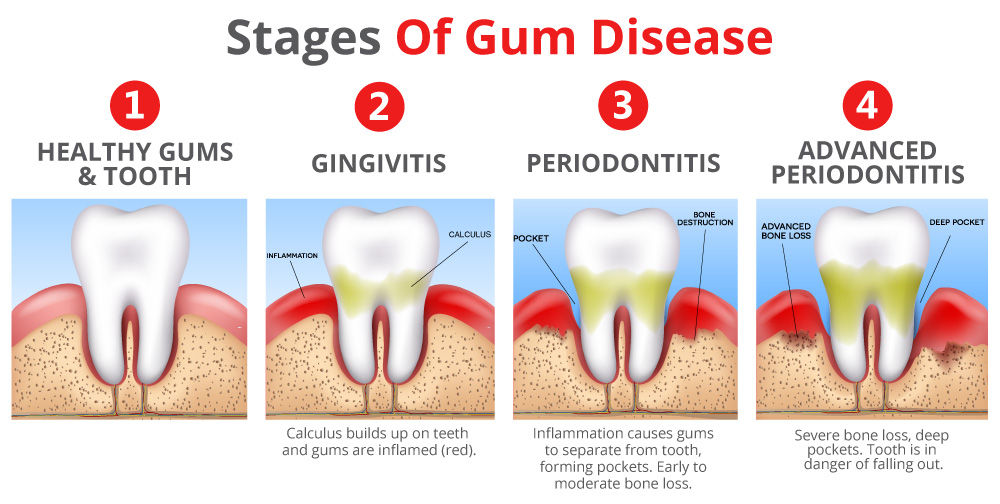Toothpaste For Gums That Bleed

Bleeding gums can be a worrying and painful experience, often signaling underlying issues such as gingivitis or periodontitis. The good news is that with the right oral care products and practices, it’s possible to alleviate the symptoms and improve gum health. When it comes to choosing a toothpaste for bleeding gums, there are several key factors to consider, including the ingredients, their effectiveness in addressing gum issues, and how they promote overall oral health.
Understanding Bleeding Gums
Before diving into the world of toothpastes designed for bleeding gums, it’s crucial to understand the cause of the issue. Bleeding gums are often a symptom of poor oral hygiene, leading to the accumulation of plaque and bacteria along the gum line. This can cause inflammation, known as gingivitis, which is the early stage of gum disease. If left untreated, it can progress to periodontitis, a more severe form of gum disease that can lead to tooth loss.
Key Ingredients to Look For
When selecting a toothpaste for bleeding gums, certain ingredients can provide therapeutic benefits:
- Sodium Lauryl Sulfate (SLS): While SLS can be controversial due to concerns over its potential to irritate mucous membranes, it’s also an effective foaming agent that helps remove plaque and bacteria, which are primary causes of gum inflammation.
- Triclosan: Found in some antibacterial toothpastes, triclosan helps reduce plaque, gingivitis, and bad breath. However, its use has been restricted in some countries due to environmental concerns, so it’s essential to check local regulations.
- Stannous Acid: This ingredient offers antibacterial properties, helps prevent plaque and gingivitis, and can also provide protection against tooth decay and sensitivity.
- Potassium Nitrate: Often used to treat sensitivity, potassium nitrate can also help in soothing the gums.
- Fluoride: Essential for preventing tooth decay and promoting oral health, fluoride is a cornerstone ingredient in most toothpastes.
Features of an Ideal Toothpaste for Bleeding Gums
An ideal toothpaste for addressing bleeding gums should have the following features:
- Anti-plaque and Anti-gingivitis Properties: The ability to combat the formation of plaque and reduce gingivitis is crucial.
- Gentle on Gums: The toothpaste should be formulated to be gentle on the gums, reducing irritation while still providing effective cleaning.
- Soothing Ingredients: Ingredients that help soothe and calm irritated gums can provide relief and comfort.
- Professional Recommendation: Look for toothpastes recommended by dental professionals or those that carry the American Dental Association (ADA) Seal of Acceptance, indicating they have met certain standards for safety and effectiveness.
Top Picks for Toothpaste for Bleeding Gums
Several toothpastes on the market cater specifically to the needs of individuals with bleeding gums. Some top picks include:
- Colgate PerioGard: Known for its antimicrobial properties, it helps control plaque and gingivitis.
- Tom’s of Maine Antiplaque & Whitening Toothpaste: Offers a natural alternative with ingredients like tea tree oil for its antimicrobial properties.
- Sensodyne Rapid Relief: While primarily known for sensitivity relief, it also contains ingredients that help soothe and protect gums.
Implementing Good Oral Hygiene Practices
While choosing the right toothpaste is crucial, it’s equally important to practice good oral hygiene:
- Brush Regularly: Brush your teeth at least twice a day, paying special attention to the gum line. Use gentle circular motions and avoid harsh brushing.
- Floss Daily: Flossing removes food particles and plaque from between teeth and under the gum line, areas a toothbrush can’t reach.
- Mouthwash: Using an antibacterial mouthwash can provide additional protection against plaque and gingivitis.
- Regular Dental Check-Ups: Regular visits to your dentist are vital for early detection and treatment of gum disease.
Natural Alternatives and Home Remedies
For those interested in natural alternatives or home remedies, several options may help alleviate bleeding gums:
- Salt Water Rinse: Rinsing with warm salt water can reduce swelling and kill bacteria.
- Aloe Vera: Known for its soothing properties, aloe vera gel can be applied directly to the gums to reduce inflammation.
- Tea Tree Oil: Added to toothpaste or used as a mouthwash, tea tree oil has antimicrobial properties that can help control plaque and gingivitis.
Conclusion
Bleeding gums are a treatable condition, and with the right approach, it’s possible to reduce symptoms and improve gum health. By understanding the causes, selecting a suitable toothpaste, and practicing good oral hygiene, individuals can take proactive steps towards healthier gums and a healthier smile. Remember, while over-the-counter toothpastes and natural remedies can provide relief, they should be used in conjunction with, not in place of, professional dental advice and regular check-ups.
What are the primary causes of bleeding gums?
+Bleeding gums are primarily caused by poor oral hygiene, leading to the accumulation of plaque and bacteria along the gum line, which results in inflammation known as gingivitis.
Can natural remedies replace professional dental care for treating bleeding gums?
+No, while natural remedies can provide relief and support oral health, they should not replace professional dental care. Regular dental check-ups and cleanings are crucial for the early detection and treatment of gum disease.
How often should I visit my dentist if I have bleeding gums?
+If you’re experiencing bleeding gums, it’s advisable to visit your dentist more frequently than the standard recommendation. Your dentist may recommend visits every 3-4 months to monitor your condition and provide professional cleanings.
Can children use toothpaste designed for bleeding gums?
+It’s generally recommended that children use toothpaste specifically designed for their age group and dental needs. Consult with your child’s dentist or pediatrician to determine the most appropriate toothpaste for their condition.
Are there any side effects of using toothpaste for bleeding gums?
+While generally safe, some individuals may experience side effects such as tooth sensitivity, gum irritation, or allergic reactions to certain ingredients. Always follow the manufacturer’s instructions and consult your dentist if you experience any unusual side effects.


